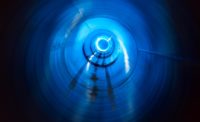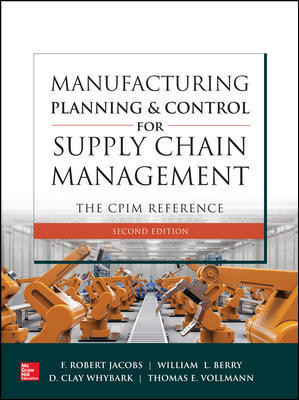Renting the wrong remote visual inspection or nondestructive testing equipment for your inspection is more common than you may think. Each individual field of NDT has its own challenges and considerations depending on the application.
Learn to recognize the symptoms of renting incorrect RVI equipment. Are you renting your borescope from someone that just rented a boat or finished selling some PPE gear a few minutes ago? If this is the case you may want to look elsewhere for an expert in remote visual inspection.
Beware of the rental agent that rents the same equipment regardless of the customer’s application. Too often a customer is talked into renting a long borescope when the best choice for their particular application would have been a much shorter length instrument. This is the result of poor detective work on the rental agent’s part and not understanding the limitations of remote visual inspection equipment. For the customer it will result in a less productive inspection and potential damage to the borescope that would have been avoidable with a more appropriate choice.
If someone rents 100 products they cannot be an expert in all of them; it is most likely they will have a solid understanding of very few products. If you ask a technical question about the operation of the equipment you are renting, does the rental agent respond with confidence and know exactly how to achieve the best performance with the equipment or does he simply refer you to the operator manual and leave you to your own devices? By not partnering with an expert rental agent, customers risk being stranded in the field with questions about how to properly operate an expensive video borescope.
Recently, I witnessed an inexperienced rental agent return equipment for repair after he insisted the borescope was broken. As it turned out the rental agent did not know enough about the borescope to understand that the illumination needed to be turned on and that he needed to back off the digital zoom to achieve a clear image. One can only imagine the bad advice an inexperienced rental agent is capable of offering a customer in need of a solution to a critical problem.
The three most common problems that result from not partnering with an experienced rental agent:
1. The actual inspection becomes more labor intensive and time consuming. If you are forced to struggle with a borescope that is too long or the wrong diameter you spend more time trying not to step on the probe or squeeze it into your inspection port.
2. A much higher potential of repairs. A probe that is too long or is not well suited for your particular application is more than just a nuisance—it is a potential repair bill. The wrong remote visual inspection equipment can easily be damaged if the unneeded length is being stepped on, not able to make a bend in a pipe or is too large to fit the application.
3. Poor inspection results. Finally, the wrong remote visual inspection equipment will simply not provide the detailed images necessary to make good decisions.
An expert asks about your application and from an understanding of what you need to view he will recommend the best remote visual inspection equipment. Here is a list of 10 questions you should be asked before renting a borescope.
1. Diameter: The diameter of a borescope is critical for a successful inspection. A borescope needs to fit in the passageway without becoming trapped.
2. Length: A borescope needs to be long enough to reach the area that needs to be viewed; however, if the probe is too long it may become a hazard.
3. Tip to target distance:The distance that the tip of the probe will be from the area being inspected is an important consideration. Typically, a borescope will have a selection of tip optics available that will yield good images from only a few millimeters to several inches. Understanding this distance is critical to selecting the correct tip optics and achieving the best possible image.
4. Direction of view: Some applications will require an offset direction of view and not just straight ahead. For these types of applications it is crucial that the correct side view tip adapter or probe be chosen. For example if you needed to inspect an orbital weld in a pipe, a straight view borescope could not see the weld where a side view would reveal the entire weld by simply rotating the probe around the circumference of the weld.
5. Waterproof: Will you be submersing the borescope in water or other fluids? Most borescopes have some waterproof rating to a prescribed depth. Before renting you need to verify that that the borescope you plan to use is rated for use underwater. If the borescope is not watertight then the borescope will fail, preventing you from completing your inspection and requiring expensive repairs.
6. Geometry: The geometry of an inspection is something else that needs to be considered to select the most appropriate remote visual inspection tool. A small part may have passageways that are large enough for a 2.0 mm borescope, however, due to the complex twists and turns a probe that is 0.5 mm is the best selection because it will have a tighter bending radius and be able to navigate the passageways without breaking.
7. Portability: The environment that a borescope will be used in is crucial to proper selection. An inspection that will be done at a work bench does not have the same requirements as an inspection that will be done at the top of a wind turbine. Obviously, one inspection requires a borescope rental that is portable and lightweight.
8. AC or DC Power: Some borescope inspections require DC battery power when AC is not available. This is an important question that needs to be asked before renting remote visual inspection equipment. The life of a fully charged battery also needs to be understood, as additional batteries may be needed to cover the duration of an inspection.
9. Recording media:Although most remote visual inspection equipment is equipped with the ability to capture still images and video, we still need to make sure that the equipment you intend to rent can store sufficient video on media that is useful. It does most people no good to go in the field with a piece of equipment that is so old it records on tape or DVD. Make sure the equipment you are renting includes modern recording media for text annotation and voice recording as well.
10. Is tip articulation needed? Many borescopes offer the ability to articulate the tip of the probe and others do not. Articulation is a nice feature; however, these instruments are far more expensive and if used incorrectly the articulation mechanisms may be damaged, resulting in expensive repairs. Often a non-articulating borescope will perform even better if equipped with a wider field of view or a side view tip.
By partnering with an expert in the field of remote visual inspection you will save time and money while experiencing better inspection results.





